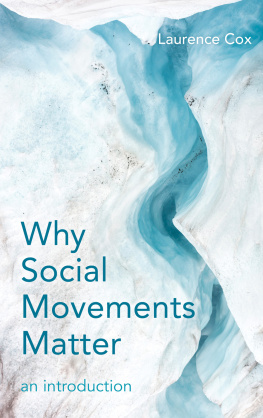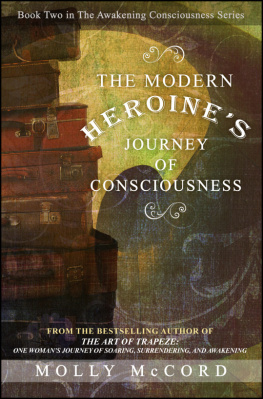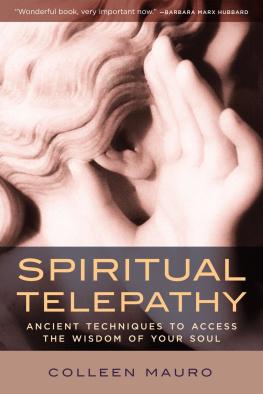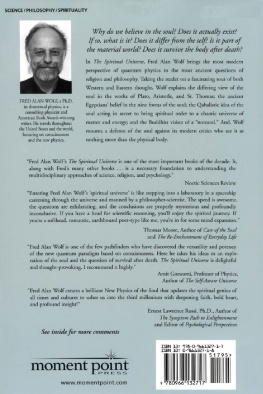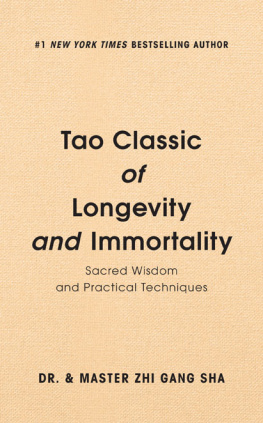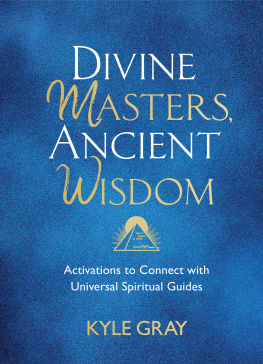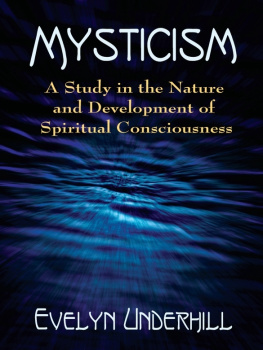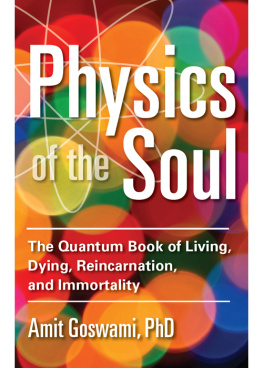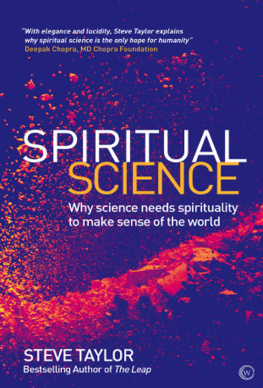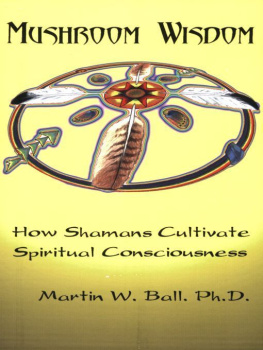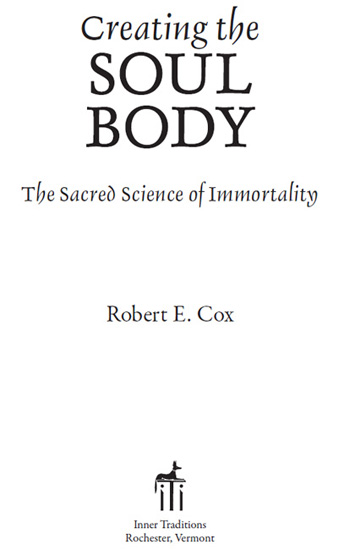
A stairway to the sky is set up for me... that I may ascend on it to the sky.
EGYPTIAN PYRAMID TEXTS, 1108 (ca. 2400 BCE)
Preface
This book is devoted to a reevaluation of ancient systems of religious-mythological thought and their relevance to our modern systems of scientific thought.
Throughout this book runs this theme: The ancients were much more intelligent than we have supposed them to be. In particular, the chapters that follow propose that many ancient cultures once shared a genuine spiritual science, a science of consciousness, which in certain ways rivals and even surpasses the most advanced physical theories of today.
In this volume we will focus upon a particular aspect of the ancient science dealing with the path of immortalitythe step-by-step expansion of consciousness throughout the universe and even beyond the universe into the bosom of the infinite. In the process, we will see that the ancient Vedic, Egyptian, and Hebrew traditions shared a common map of this path, which, though expressed in arcane symbolic terms unique to each culture, was and is genuinely scientific.
More specifically, we will see that this map can be reduced to an exponential system of space-time scales, both macroscopic and microscopic, which can be used to predict accurately the most fundamental scales of cosmological organization discovered so far on the basis of general relativity, as well as the most fundamental scales of force-matter unification discovered so far on the basis of quantum theory.
The implications are quite profound both from a scientific point of view and from a cultural-historical point of view. How the ancients came to possess this knowledge remains a mystery of the highest order pertaining not only to the epistemological methods by which they obtained this knowledge, but also to the means by which different cultures, separated by serious linguistic, religious, cultural, and geographic boundaries, came to possess the same knowledge.
Yet our focus here is upon the substance of the knowledgethe science hidden behind the arcane myths, geometric symbols, and religious terms that the ancients used to express such knowledge. In this regard, we will draw upon primarily three ancient traditions that predate the birth of Christ and for which there are abundant surviving texts: the Vedic tradition of India, the Hebrew tradition, and the Egyptian tradition. We will also draw heavily upon the Hermetic texts written in Egypt during the Hellenistic era. Although these texts were written in Greek and contain many Greek philosophical ideas, the authors claimed to be presenting the philosophic spirit of ancient Egypt.
This is consistent with the spirit of the Ptolemies, the Macedonian rulers of Egypt at the time, who likewise sought to revive the ancient wisdom of Egypt. Upon assuming power in 332 BCE, after Alexander the Great had conquered Egypt, they ferreted out the secret scrolls of the Egyptian priesthood and made them available to the public for the first time in history. In its heyday, the Great Library of Alexandria purportedly held some seven hundred thousand scrolls, and scholars from all around the Hellenistic empire were invited to come and study their contents. Unfortunately, the Great Library was eventually destroyed, and the majority of the scrolls, which likely held a vast treasure of ancient wisdom, were lost.
The Hermetic texts, written during the peak of the Hellenistic empire, likely embodied many secrets drawn from the ancient Egyptian scrolls, expressed anew in Hellenistic language and thought. As such, they may offer a unique insight into the lost philosophic spirit of ancient Egypt, as the authors claimed. The texts reflect a prevalent view in the ancient world that earlier generations were wiser than the present generation. In fact, virtually all of the ancient cultures looked back with nostalgia on a previous age when the spiritual wisdom of humankind was greater than in their current time.
The ancients believed that this spiritual knowledge was most complete at the very dawn of civilization, and over the course of millennia it was gradually lost. For this reason, we will focus most closely upon the ancient Vedic, Egyptian, and Hebrew traditions because they claim great antiquity, dating back thousands of years before the time of Christ. The arguable facts that these traditions shared a common map of the path of immortality, counted exactly the same number of stages on this path, and understood these stages in the same way are consistent with the notion that there was once a great knowledge shared by all of humankind at the dawn of history.
Our goal here is to rediscover the lineaments of that ancient knowledge and attempt to translate it into the language of mathematicsthe universal language of scienceso that it can be evaluated in light of modern scientific discoveries.
Introduction
A SCIENTIFIC REVOLUTION IN THE MAKING
At the present moment in history we stand on the brink of a scientific revolution that will likely determine the course of human thought for thousands of years to come. Theorists all around the world are currently collaborating on the development of a final scientific theory, a unified hypothesis of all the laws of nature, which promises to complete our scientific understanding of the universe. This prospective unified thesis has thus often been dubbed the holy grail of modern science.
The new theory is designed to study the behavior of the unified field, which acts as the source of all things in creation. Yet there is no direct, empirical evidence that the unified field exists; for all practical purposes, it is empirically hidden. There is no hope, even in principle, that the unified field or its elementary constituents will ever be observed empirically, either now or at any time in the future. As a result, its existence must be posited on an a priori basis, as we might posit an axiom in a theory of pure mathematics.
This amounts to an expansion of scientific thought such that the objects of scientific inquiry are no longer limited to the forms and phenomena of the observable universe. By consensus, the range of scientific thought has been expanded to include forms and phenomena that transcend all means of empirical observation.
METAPHYSICS VERSUS PHYSICS
To be honest, the pursuit of a unified theory more closely resembles an exercise in metaphysics than physics. Physics may be defined as the type of science that starts with empirical data and then attempts to derive the local laws of nature that govern that data. Newton first saw the apple fall and then deduced the law of gravity.
Metaphysics, on the other hand, may be defined as the type of science that starts with deductive assumptions regarding the hidden reality of the universe and then attempts to explain the empirical data on that basis. The term metaphysics means that which goes beyond physics. Metaphysical theories tend to go beyond physical theories in the sense that they deal with hidden realities that transcend all means of empirical observation. Whether modern theorists are willing to admit it or not, the search for a unified theory represents literally an attempt to develop a metaphysical theory of the physical world.
In actuality, the quest for a unified theory is not motivated by any new empirical evidence. Instead, it is motivated by pure aestheticsby the innate desire of the human mind to seek wholeness and unity in its understanding of nature. This desire is not new; it is as old as the hills. The ancients also sought to develop a holistic understanding of the universe by positing the existence of an empirically hidden field that acts as the source of everything. Like modern theorists, they also adopted a metaphysical approach to reach this understanding. This reminds us of Ecclesiastes 1:10: Is there anything of which one can say, Look, this is new? No, it has already existed, long ago before our time.
Next page






